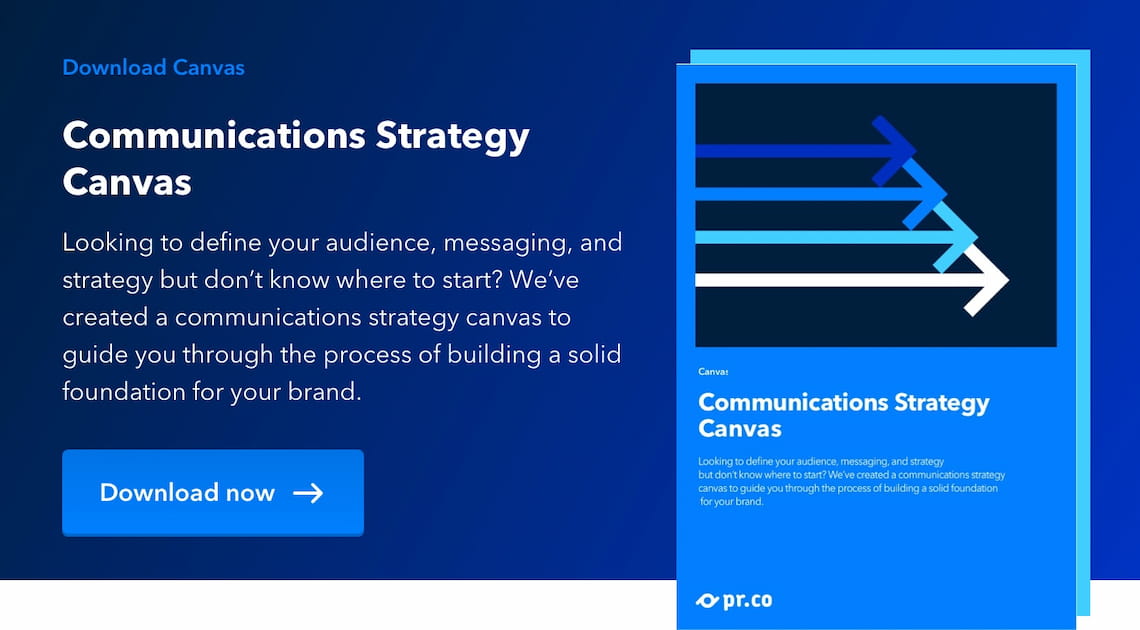As the world becomes increasingly digital, optimizing your PR content for search engines will help your team hit a home run. No matter how good your news is, if it can’t be found, creating it is a waste of time and energy. Backlinks, keywords, and good domain authority are like crumbs scattered around the internet. If you lay them out right, you'll be easily found, and by the right people.
While online newsrooms solve your findability issue, there's a lot more you can do to optimize your PR content for search engines. In this article, we spoke to SEO expert Arnout Hellemans - who’s set up SEO strategies for brands like RBS, TNW, and Leaseweb - for some top tips on how people in PR can leverage SEO. Here's his advice:
-
Do your keyword search
-
Give journalists a reason to link back to you
-
Write strategic headlines
-
Host news on your own domain
-
Work with your SEO team
1. Do your keyword research
Keyword research is a great way to figure out what it is that people search for so that you can adjust your content strategy to fit that. Algorithms are getting more sophisticated, yes, but they are not magicians. There are a few things you can do to optimize for search ie. make sure they actually find you.
Think in questions, speak like a human
First and foremost, keywords help you write for your audience. How would someone search for your news? What do they type into Google? People tend to search for things with questions. When coming up with your PR content strategy you should focus less on keywords and more on the phrasing of common questions.
A keyword like ‘plant’, however, will have so much search volume it’s very unlikely people will find it, but if you use the term Old Lady Cactus then it’s much more likely you can snatch up traffic from a niche audience. Journalists all have a beat, so find out their niche and use it to your advantage.
-jpg.jpeg)
Use synonyms
When people search for your brand it’s very likely they will find you. Generally, you will rank well for your own name. Because of this, it’s best to channel your energy into finding keywords that describe you in a different way ie. synonyms.
The added benefit of this technique is this- search engine algorithms tend to group words related to each other and make themes. This is to make sure when you search for online newsrooms you will get the press websites rather than the smash hit The Newsroom for HBO. So by cocooning your main keyword in synonyms you are making sure that you and Google are talking about the same thing and bewildered Netflixers don’t wander onto your site.
Tools to power your keyword search
There are some tools out there to make improving your SEO a lot more digestible and accessible. Here’s our pick of the best ones:
- Ahrefs: We can vouch for the excellence of Ahrefs because we’ve been using this tool for the past four years. This SEO software suite includes tools for keyword research, content gap analysis, competitor analysis, and much more. Plus, their blog is one of the most complete and informative we’ve ever seen. It’s our go-to resource for anything SEO-related.
- SEMrush: This tool allows you to accomplish everything from content ideations to optimization. The keyword database is rich and easy to navigate.
- Moz is a set of tools that make SEO, inbound marketing, link building, and content marketing easy. This tool is easier for the end-user. For a discipline as substantial as SEO, this is a major plus.
- PeopleAlsoAsked: This tool gives you a breakdown of which questions users are asking about a topic and vitally and how those questions are linked together.
-
Neil Patel’s Uber Suggest: It’s no wonder why Neil Patel’s marketing blog attracts more than 10 million visitors each year. He even has his own tool, Uber Suggest, to help you track and improve your rankings, and also manage your SEO ‘health’.
- Google Analytics: No strategy is complete without measurement. That's where Google Analytics comes in. Sure, it can be a bit daunting if you're a first-timer, but once you've got a good grasp of the basics, you’ll have a good insight into your users’ behaviors and your content performance. Plus, it’s free.
- Google Data Studio: If it’s reports you’re after, Google Data Studio takes all of those insights and turns them into nice-looking visuals. There are endless ways to customize each report and data is constantly updated, making it more reliable.
Looking for more tools to help simplify your life? Here's our overview of 30+ tools for PR teams.
Don't forget to tag your images
Google is thorough, so anywhere without keywords is a missed opportunity. If you have photos do not forget to include your keywords in the alt text. This is another of the neon arrows pointing your way.
If you want to get your news seen and heard by the right people, you need to be strategic. Here's how to leverage the power of SEO in your PR strategy.
2. Give journalists a reason to backlink you
Backlinks are great when it comes to organic rankings (SEO), not to mention, Google sees links as a type of third-party endorsement (public relations). The more relevant backlinks you get, the more trust and authority you build online. So ultimately, you gain more domain authority by having your SEO strategy support what you want to achieve with your digital PR campaign.
Backlinks are great when it comes to cranking up your rankings (SEO). Not to mention, Google sees this link as a third-party endorsement. Think of backlinks as votes for your PR content. The more votes you have, the more people will visit your website. This is a very human way of making recommendations (or votes) - if several people have told you a hairdresser is good, you will trust he will do a good job. Your aim should be to get as many of these votes as you can, so you will be recommended as the source of a good story.
But getting a backlink isn’t so easy. If you publish something and don't incentivize journalists to add a link to your website, they probably won’t. If you want a journalist to give you a backlink, don’t give all the information away in the main pitch. Always add a link to learn more that leads back to a subpage on your site.
Here, for example, is an article about stem cells from The Next Web where the author links back to a press release from University of Vermont, where the reader can find more info on the research.
For example - if you're sharing news about research you've conducted, you can give more information around how that data is gathered on your website. When you're launching a new product, make a page for the nitty-gritty details and specifics, and mention that page in your release. When media contacts and readers have a reason to go to your website, you won’t have to beg for links.
Backlinks are also a healthy KPI, and everyone in PR loves a great KPI. What better measure of engagement than votes of confidence from the surrounding community?
If you’re looking to gain some high-quality backlinks, here’s a great resource from Ahrefs.
3. Write strategic headlines
A strong PR play these days is to write an eye-catching headline to draw attention to your press release, and update it later to better reflect search intent. This way you get all the traffic from your topical angle, and later get traffic from an audience looking for answers to common questions in your niche. Win-win!
With this technique, you can URLs to your advantage. If you release an annual report on say, the Ultimate Cactuses, make sure that report always lives on the same page. Make sure your recurring news URLs are something generic and evergreen like ‘Most Popular Cactuses’.
Every year, update your headline to ‘Old Lady Cactus Voted Best Plant in Europe 2020’ - to bring in the traffic of the day- while keeping the same URL. By using all the backlinks you have already gained, you will naturally rank well for 2020.
And remember: when writing a headline always ask yourself the question: why would a journalist want to read this, is this genuinely newsworthy? If you have a strong answer for both then congratulations, you are officially findable.
Besides an attention-grabbing headline, don't underestimate the importance of a strong media pitch subject line. Here are a few examples to help you get started.
4. Host news on your own domain
Make sure to host your news on your own domain. Only by hosting your news on your domain - and not on Medium, or any other software vendor's domain - you're building domain authority for your website. Hosting your news on a subdomain works as well, but we've seen great increases in impressions and clicks from brand that switched from subdomain to main domain (or subdirectory).
A reverse proxy, which acts as the traffic warden between the users of their site and your server- is a great, often untapped, source of building domain authority. It makes sure that all your content (including your main website) is under your main domain, which results in a much stronger domain authority (hooray!).
When you have many websites (for example our subdomain news.pr.co would be treated as a separate site to pr.co) they all need to put in the elbow grease to build their own individual search ranking. And that takes time. Why do it five times when you could do it once? By using a reverse proxy on your online newsroom you can make sure that every vote for your news and your site reinforce each other. And that, PR friends, is another great way to be findable.
5. Work with your SEO team
It may seem obvious but SEO experts are the kings of findability. Not working with them is a missed opportunity. As someone who works in PR, a role that is increasingly resembling content marketing, working with marketing is a bit of a no-brainer. By building both your brand and your brand authority together, the results can be significant.
After all, if you do get the wide coverage you deserve, but you get no backlinks, then all that hard work will be worth very little.
Ana is a marketer at pr.co, and is the driving force behind our 100+ articles and guides. Ana has an MSc in Corporate Communications, and four years of experience in the PR industry. Now, Ana distills knowledge from pr.co’s 250+ customers to help PR professionals get better results through high-quality content.. Connect on LinkedIn or send an email





